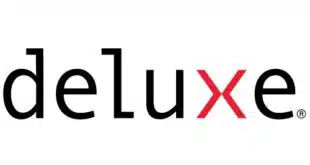The U.S. conversion to EMV chip cards has produced a windfall for VeriFone Systems Inc. over the past couple of years. But despite record revenues in the quarter ended April 30, delays in getting EMV equipment certified contributed to sharply lower profits and financial expectations for the leading domestic point-of-sale terminal maker.
Also crimping profits were weaker advertising revenues from taxicabs as well as price competition and slowing economies in some of VeriFone’s emerging markets, leading to lower margins and expected sales.
San Jose-based VeriFone now expects its fiscal 2016 revenues to total $2.1 billion, about $60 million lower than earlier predicted, and per-share earnings will be about 17% lower. In response, VeriFone late Tuesday announced a restructuring intended to save $30 million next year and which includes a 5% reduction in its workforce. VeriFone had about 5,400 employees in fiscal 2015 ended last Oct. 31, which means about 270 employees could lose their jobs.
Certifications of EMV equipment by merchant acquirers and processors have emerged as one of the biggest problems in the U.S. switch to EMV chip cards from fraud-prone magnetic-stripe cards. Although the card networks first announced plans for the conversion nearly five years ago, many merchants delayed equipment purchases until shortly before or after the networks’ Oct. 1, 2015, EMV point-of-sale liability shift, leading to certification bottlenecks. A merchant can’t accept chip cards until its POS equipment has the needed certifications.
Many of VeriFone’s largest retail customers have their certifications, but delays are hitting some multilane retailers and small and mid-sized businesses hard, chief executive Paul Galant said on a conference call with analysts.
“The EMV bottleneck in the U.S., driven by integration and certification complexity and testing delays, is beginning to take a far more pronounced toll on the speed of sales and deployment of EMV-ready devices for our SMB and multilane businesses,” Galant said. “It is also delaying the implementation of higher-margin attached services such as our Point payment-as-a-service offering as well as encryption, tokenization, and estate management. VeriFone is also dedicating more resources than we anticipated to support our U.S. clients with their EMV implementations.”
VeriFone can’t recognize EMV service revenues until systems are actually processing chip card transactions, he added. Galant, however, said the certification problem should begin easing in the fiscal fourth quarter. “This is a temporary set of issues, we will get through those,” he said at the end of the call.
Investors focused on the here-and-now, however, and dumped VeriFone shares in after-hours trading Tuesday. At about 6:30 p.m. Eastern, the company’s stock was down $7.48, or 27%, from its $28.23 close.
On the bright side, VeriFone posted record revenues in its fiscal 2016 second quarter from North American petroleum retailers, a big merchant segment for the company. And services revenues, which are less volatile than hardware revenues, grew nearly 11% to $183.8 million versus the 5.6% increase, to $342.5 million, for so-called systems.
In all, VeriFone posted revenues of $526.3 million, up 7.4% from $490.1 million in fiscal 2015’s second quarter. But net income plunged 83.5% to $2.9 million from $17.6 million a year earlier. In North America, revenues increased 8.4% to $209.3 million, or 40% of VeriFone’s total.





